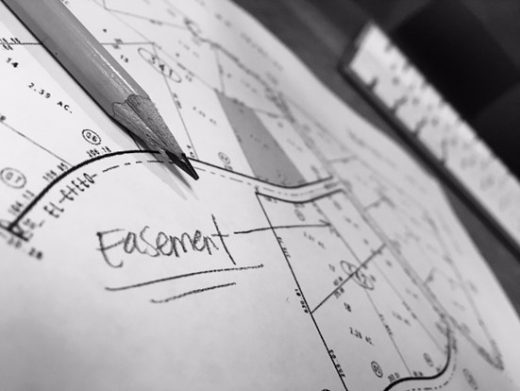Best practices for rental agreement clarity guide, Housing long-term appreciation, House income stream
Best Practices for Rental Agreement Clarity
28 May 2024
Isn’t it stressful to sign a legal paper that could change your life in a big way? Among those documents, rental agreements carry their weight of gravity.
This article will help you understand rental agreements better and underline the need for straightforward terms. It will share useful advice so the agreement is clear, benefiting everyone involved.
Understanding Rental Agreements
Rental agreements might feel like solving a puzzle filled with legal terms. They are like written promises between a landlord and a renter that lays out what each should do. Even if it looks easy at first, keep in mind that it has some serious legal stuff attached to it.
When it comes to types of rental agreements, they vary widely based on various factors:
- Residential Lease Agreements
Primarily used for renting out properties like apartments, houses, or condominiums for a specified period (usually six months to a year).
- Commercial Lease Agreements
Designed for renting out business premises such as offices, retail stores, or warehouses.
- Month-to-Month Leases
These do not have a specified end date and continue until either party decides to terminate.
- Sublease Agreements
When a tenant decides to rent out their leased property to a third party, they use a sublease agreement.
- Room Rental (Roommate) Agreements
Commonly used when individuals share a residence, dividing up responsibilities and rights for each occupant.
These are just a handful of the different types of rental agreements, each with its unique features and legal requirements.
Importance of Clarity in Rental Agreements
Sometimes, landlords and tenants fight because rental agreements are unclear. But if everything is clear in the agreement, it stops all the confusion – everyone knows their roles and agrees on them.
For the tenant, clarity provides an understanding of what is expected during their residency period. For the landlord, clear agreements facilitate addressing any potential breaches and enforcing the rules of the property.
Rental Agreement Clarity Best Practices Advice
Using clear tips for rental agreements helps to create a complete, simple-to-understand, and fair contract for everyone. Now, let’s see what some of these tips are!
Use Clear and Concise Language
While it might be tempting to use “legalese” in these agreements, it’s best to use everyday language that everyone can understand. Avoid long, convoluted sentences wherever possible. Preferably, opt for straightforward, concise sentences and phrases. For instance, instead of stating, “the lessor hereby agrees to grant the tenancy,” simply state, “the landlord agrees to rent the property.”
Clearly Define Obligations and Rights
Another integral part of rental agreement clarity involves explicit detailing of the tenant’s obligations and rights, along with those of the landlord. Often, conflicts arise from “grey areas” that have not been clearly defined. Therefore, elaborate on what each party can expect from the other. For example, outline who is responsible for minor repairs or how and when the landlord can enter the rented property.
Include All Necessary Terms
The incorporation of all necessary terms provides a comprehensive understanding of the agreement. The terms should, at the very least, cover the rent amount, payment schedule, and late fees. It should also explain security deposits and policies concerning their return, along with routine maintenance and repair responsibilities.
One of the documents that can facilitate adherence to these necessary terms is the verification of rent form. Available on the Lawrina platform, the document helps to maintain a transparent record of rent payments, further fostering the clarity of the agreement. Lawrina offers over 200 templates catering to a range of needs in personal and business contexts but especially shines in the realm of real estate agreements.
Explicitly Mention Duration and Termination Policies
Define the lease term explicitly, stating the start and end dates. In addition to this, the conditions that could lead to the termination of the agreement need to be clearly stated. Rules around lease expiration and renewal should also be included. Should termination occur, instructions describing the end of the tenancy process, including property condition, return of keys, and notice periods, should be included to avoid any ambiguity.
Involve a Legal Professional
While the tips provided above offer a general guide toward a clearer rental agreement, involving a legal professional is always a good idea. Their expertise in the matter ensures that the agreement conforms to legal standards, potentially saving both parties from future legal confrontations.
Best practices for rental agreement clarity Conclusion
A clear understanding of rights and obligations is the basis of any fair and equitable agreement. This statement holds even more truth for rental agreements that regulate landlord-tenant relationships.
Ensuring that all clauses are written concisely and transparently, obligations and rights are clearly defined, necessary terms are included, and duration and termination policies are explicitly stated are all key to clarity in a rental agreement. Lastly, the involvement of a legal professional adds an extra layer of assurance.
Comments on this guide to Best practices for rental agreement clarityy article are welcome.
Property Rental
Real Estate Rental Posts
Earning a Living With Rental Properties

How to invest in rental properties
6 key features of profitable real estate rental property
Property Design
Contemporary Property Articles – architectural selection below:
5 tips for brewing delicious coffee at home
Comments / photos for the Best practices for rental agreement clarity advice page welcome








